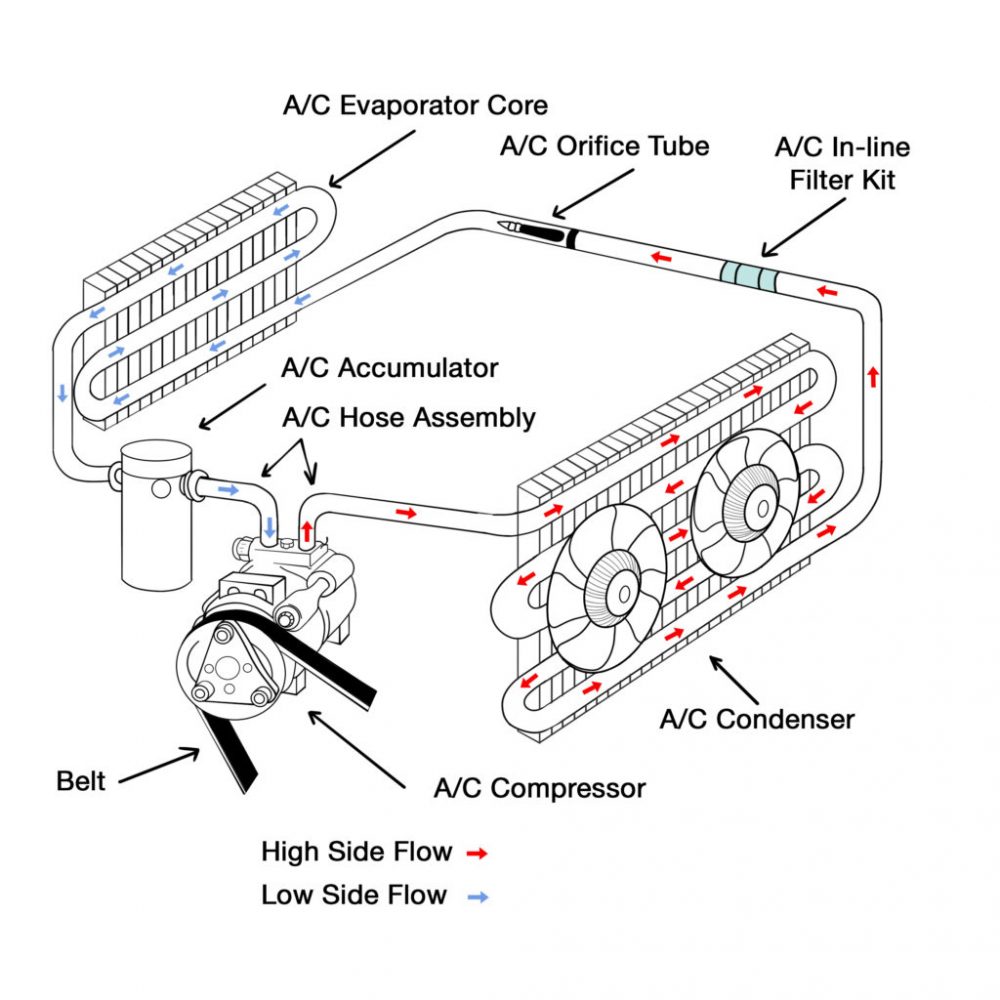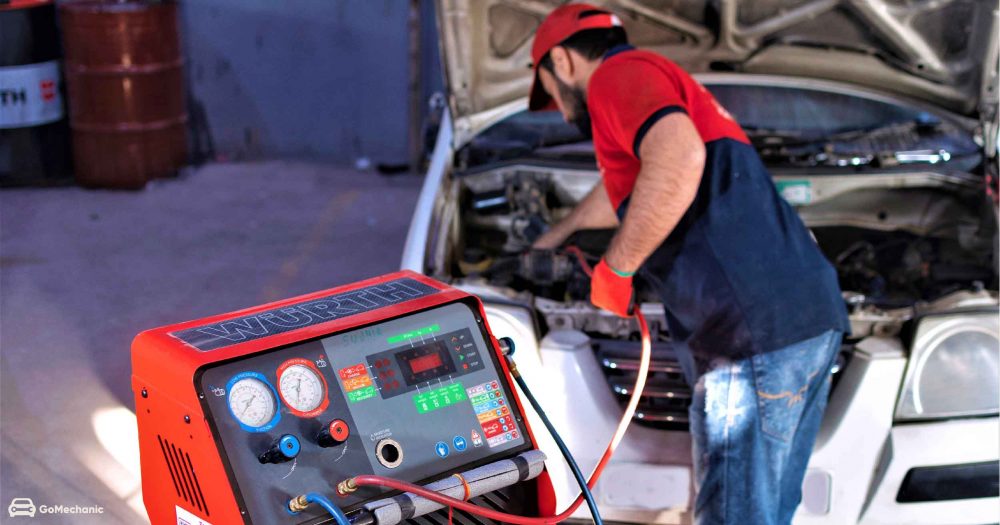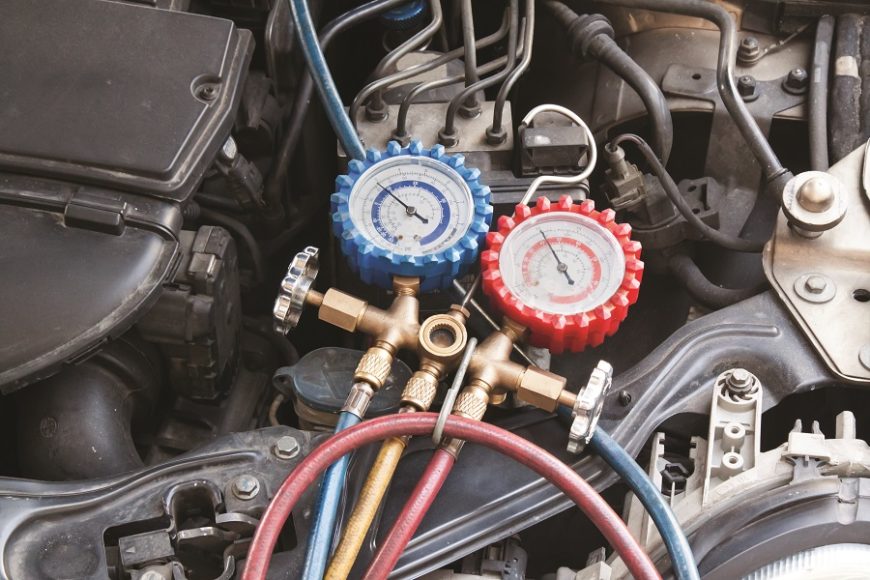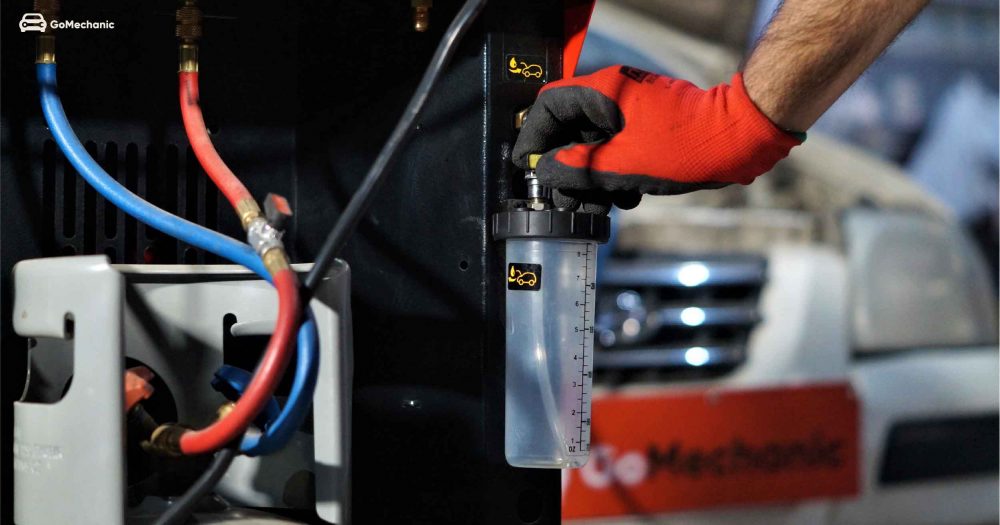We all love the ultimate chill blasting from the car’s vents, especially when we have to survive from the hot and humid climate. When the car AC is turned on and it emits cool and refreshing air, the whole travelling becomes easy and relish. However, believe it or not, no car comes with an ice machine that is full of multiple ice cubes. In fact, the cold air that we get from the AC vents is converted from the hot air. The hot air has to go through multiple steps to convert into the cool and fresh air.
The Thermodynamic process is involved here and that’s what maintains the temperature inside your car room. Here, the pressure is involved and it causes changes in the inside temperature. You simply have to turn the AC on and the compressor will do the further work. However, it’s not that simple as it looks.
In this blog, we will talk about the overall process involved with the working of car AC. But before that, let’s dig down into reasons to have AC in your car and all components of AC.
Why should you service your Car AC?

AC is placed inside a cabin and it helps to relax the atmosphere to make humans fatigue-free. Additionally, it is essential for the health of human beings as it balances the temperature of your body. But when you are looking for the car AC, it is for the following reasons:
- When a vehicle is in a congested state, passengers have to face a lot of traffic and due to which, the car’s speed usually slows down. This is why vehicles come with the equipped system to provide a comfort zone to passengers.
- Summers are usually hot and humid and that’s why driving in the car becomes quite difficult. So, an effective AC system in the car will maintain the cool temperature in the car and make the environment humid free.
- AC doesn’t only maintain the cool environment, but it also filters the air which is quite important in the polluted cities. This protects you from hazardous air pollution and health issues.
- In winters, cars usually face problems due to fog as it makes difficult to look outside the mirror. That’s why we require AC to normalize the inside temperature and maintain your safety.
- Most countries face a lot of climate changes, which can cause some serious health issues. So AC in the car will maintain the comfort zone and make their journey smooth.
Due to these problems, almost every car comes with the AC and we can’t even imagine our drives without it.
When we talk about the working of Car AC, all its components work together and make your ride comforting. So before jumping to the process, it’s very important to understand each and every component.
What are the components of a Car AC system?

The Car Air Conditioning system has almost the same components as a room’s AC. But as the Car is smaller than a room, there are a lot of modifications made in it so that it can compactly fit in the space. The major components used in Car’s AC are:
-
Compressor
The compressor of the AC is known as the heart. It promotes the pressure of the refrigerant so that it can transform vapour refrigerant into a liquid refrigerant. The liquid refrigerant enables the overall flow of air through the condenser.
-
Condenser
The condenser is a small device that controls the condensing. When you want to set the car’s temperature to low or high, liquid refrigerant sent by the compressor has to face the convection force provided by the radiator fan or by a separated fan. This force helps in controlling it.
-
Expansion Valve
Expansion Valve helps in expanding the high pressure, by sending low-temperature liquid refrigerant by the condenser. As its name implies, it controls the expansion and reduces the pressure. The release pressure of the refrigerant before sending it to the evaporator.
-
Evaporator
The evaporator is placed behind the AC vent and looks like the heat exchanger. It takes the heat from the car and converts it into liquid refrigerant by changing it into vapour. You can enjoy cooling through fan inside the passenger’s section.
-
Orifice Tube
The orifice tube is in the shape of a cone and provided restriction in the flow of refrigerant. It allows the refrigerant to convert high to low-pressure liquid refrigerant mist before entering the evaporator.
-
Receiver Dryer
Receiver Dryer is known as the safety catch as it maintains the safety in the car. When we are using the Air conditioner, sometimes liquid starts flowing towards the compressor instead of vapours, which can damage the compressor. So the receiver dryer is used inserted between compressor and evaporator to transform the remaining liquid into vapours and then send it for compression.
-
AC Inline Filter
Air conditioning inline filter kit traps wreckage and gives you the cleaned air.
-
AC Refrigerant
Refrigerant has a low boiling point and is used by the AC as a heat exchanging medium. It is in the fluid form, so changing the temperature becomes very easy through it. At low temperatures, the refrigerant converts into gaseous form, while it stays liquid at the high temperature.
-
Accumulator
Accumulator holds the refrigerant. It desiccant the refrigerants bag by removing moisture from it and then circulate it inside the car.
Note: Car’s AC either uses an Orifice tube or an expansion valve. You can only find the combination of these two in rear AC systems.
How does a Car AC work?

Now, you know about every component of the Car AC and we can move forward towards its process. We have tried to give sequential steps on how Car AC works.
- The whole working starts with the Compressor. It compresses or pressurizes the refrigerant and converts it into the liquid from its gaseous state.
- The compressed liquid refrigerant has to pass through certain tubes located in the condenser. Here, the fresh air from outside comes in the contact with liquid refrigerant. The condenser contains a high-temperature liquid and that’s why there is a temperature incline between liquid and fresh air. Later, the heat moves from the liquid and mix with air.
- Then, the refrigerant moves into the receiver drier or accumulator. The desiccant removes the moisture from the air and refrigerant that leads to the creation of a cooler refrigerant while maintaining the system.
- The refrigerant, which is already in the cool liquid state, flows into the expansion valve or orifice tube. This process reduces overall fluid pressure and allows it to move to the evaporator (another component of AC).
- The converted refrigerant will then move to the evaporator. The air from the car will be drawn into the evaporator and go inside the evaporator core. Till now, the refrigerant temperature is cooler and it can convert the outside heat into the cold air.
- Fans near the passenger seat help in blowing the cold air through vents and make the car’s temperature cool. This process also removes moisture from the air and allows you to enjoy the fresh and dry air. (During this process, the collection and draining of the condensate also takes place). As the liquid refrigerant in the AC system becomes hotter after working, it again turns into a gaseous state.
- This hot and low-pressure gaseous refrigerant again circulates and goes back to the compressor. This is how the new cycle takes place and you get the cool, dry and fresh air.
If your AC is not working in the same way, then you have you get it checked.
Common types of Car AC systems

-
Orifice Tube and Accumulator System
The Orifice Tube and Accumulator system come with the orifice tube before the evaporator and accumulator before the compressor. The Orifice Tube controls the refrigerant flow and controls the low-pressure mist before entering the evaporator. Whereas, accumulator holds the refrigerant and removes moisture from it to control the damage.
-
Expansion Valve and Receiver-drier System
The Expansion valve and receiver-drier system come with an expansion valve before the evaporator core and receiver-drier between the condenser and in-line filter kit. The desiccant in this system absorbs the moisture. It works like the accumulator, but it is located on the high-pressure side rather than the low-pressure side. The expansion valve works the same in both systems and restricts refrigerant flow to convert the liquid into the low-pressure mist.
Why should you get your Car AC Inspected?

Each person has different needs. Some love to sit in a warm environment, while some feel more comfortable in a cold environment. But when you are the person who can’t sit in the warm car, then you will need an Air conditioner. That’s why it becomes important to get it inspected. When you sit in your car, you can judge how much air do your AC is emitting. If it’s not working in the normal way, then you should get it checked.
Read in detail: What happens when you don’t service your car AC?
Why should you get your Car AC system Recharged?
If you turn on the AC and it is not reaching a refreshingly cool temperature, then it must be low of Freon. Since it is a sealed system, low Freon means something is not right. There could be a small leakage or any part of the AC might not be working. You can get it checked at that time as the professional will identify the problem and solve it.
Suggested read: How to get the Maximum Cooling from your Car AC | Car AC tips & tricks
Service your Car AC Today!

Car Air Conditioning helps in making our ride comfortable and worthwhile. There are many different components of AC, and if there is some kind of defect in any component of the AC, then it will stop working. So get it inspected from time to time. We hope now you know everything about the working of the car’s AC. Let us know in the comments if we missed something about the car AC working.






yeah, It is important to get your car get check especially you car AC. it is important when having a long drive.
I like to read well-written articles. It looks like you spent a lot of time and effort on your blog. I learned a lot from your article and I have already bookmarked and am waiting to read a new article. keep up the good work!
Well explained thanks
thanks for the information shared by you . thank you